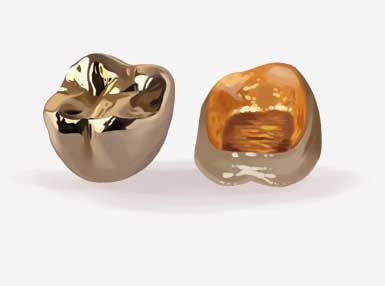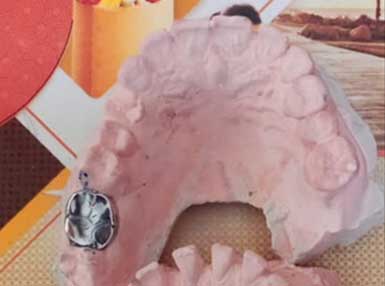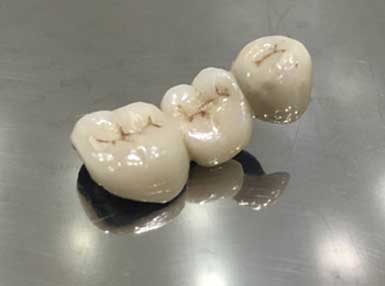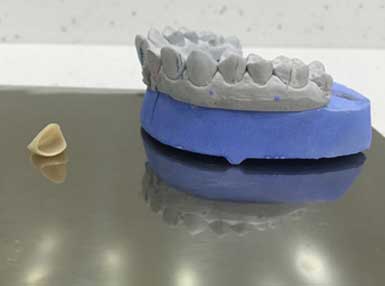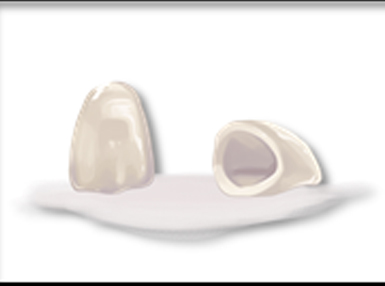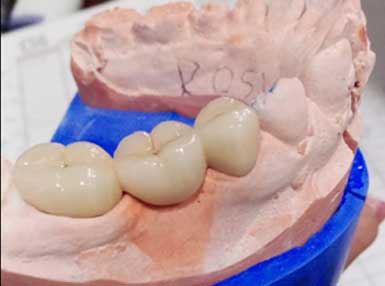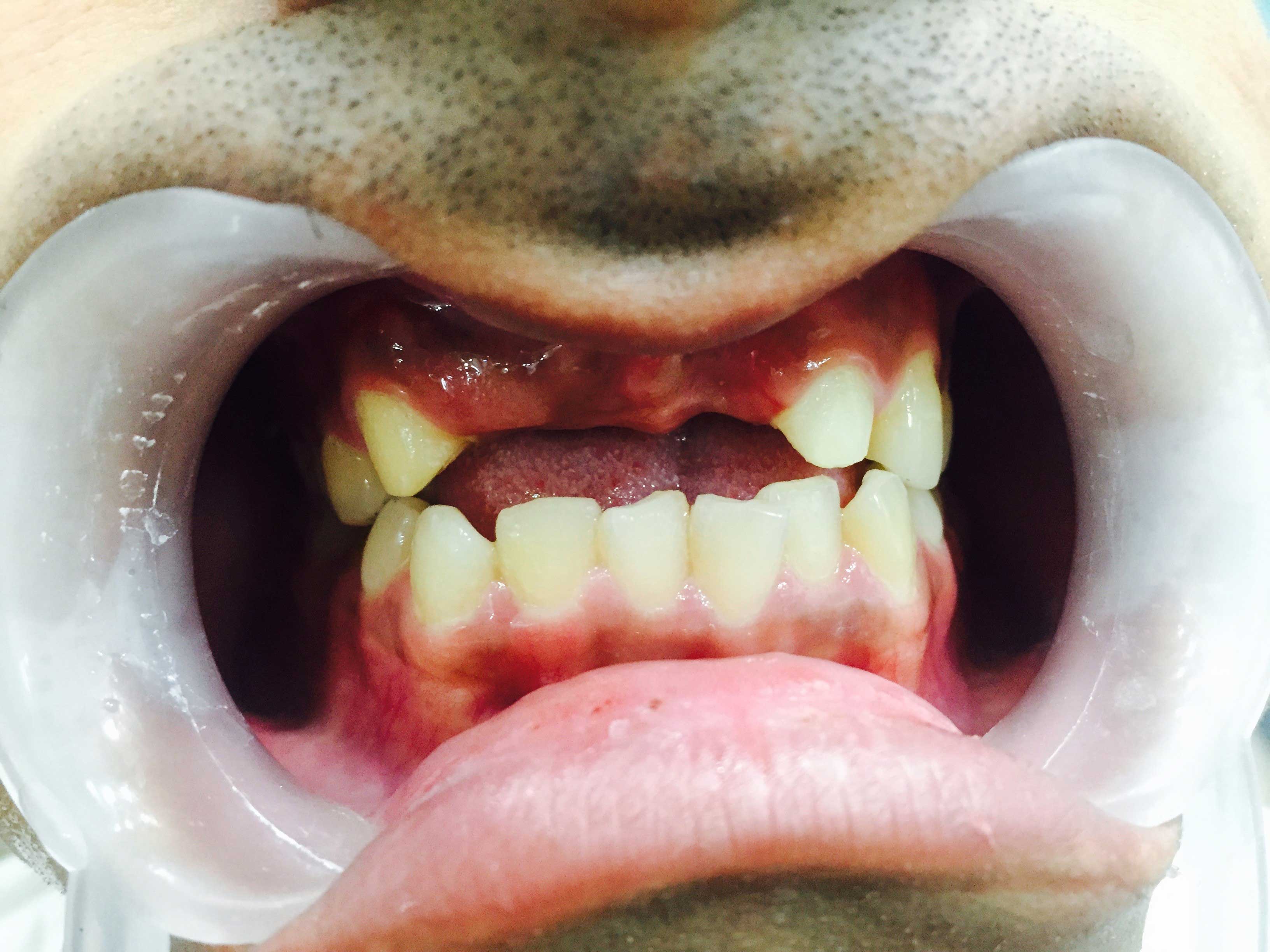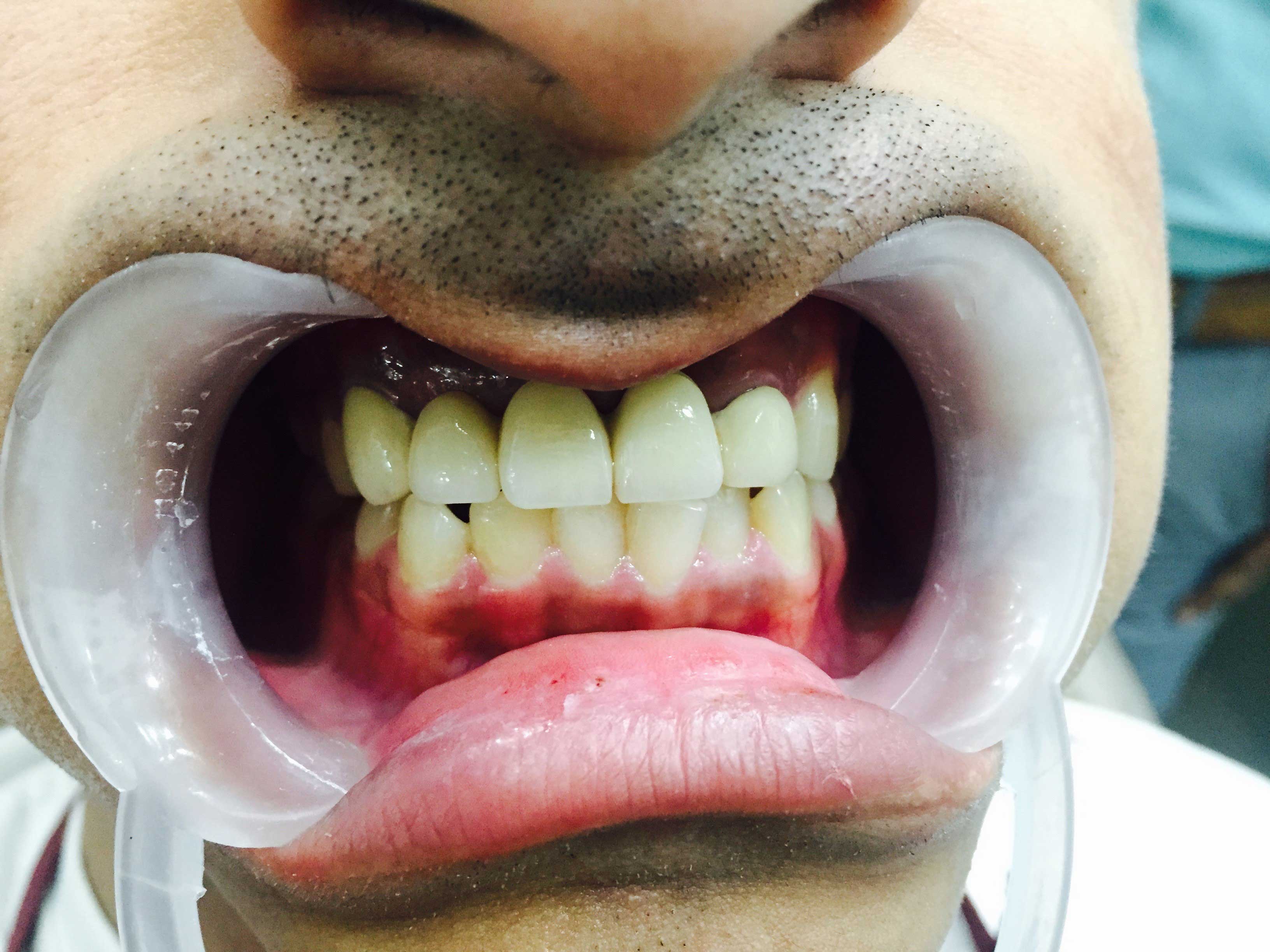CROWNS & BRIDGES - FIXED TOOTH CAP
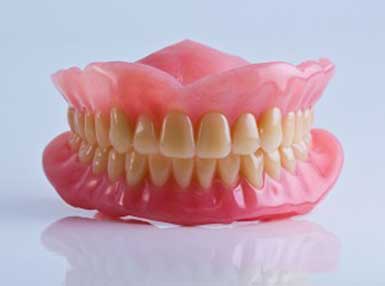
What is a dental Cap/Crown?
A dental crown is an artificial covering placed on top of a natural tooth to protect it.
Reasons- your tooth may need a crown
- After Root Canal Treatment
- Discoloured Teeth
- After Trauma - Broken teeth
- For Aesthetic Purpose
- On top of a Dental Implant
Types of Crowns
Metal Crowns
The most basic type of crowns which were used traditionally in earlier times are metal crowns. These are made from nickel and chromium material and offer good strength, durability in back teeth. But these are hardly used these days due to the unaesthetic appearance in the mouth and the demand for metal free dentistry. Nevertheless, these are sometimes indicated in back teeth after root canal therapy.
Porcelain Fused to Metal Crowns (PFM Crowns)
These crowns have a metal base for strength and a ceramic coating on the top for the natural look. These are the most popular type of crowns these days.
Advantages
- Gives a natural look to teeth compared to metal crowns
- Has good strength and durability
- Economical
Disadvantages
- Over a period of time can cause black discoloration at the gum line
- Presence of metal is unacceptable to a few
- In people with Teeth Grinding habit, it can cause severe wearing of the cap
- Ceramic may chip or fracture affecting looks
ALL CERAMIC CROWNS/ ZIRCONIA CROWN/ PURE CERAMIC CROWNS
These are one of the best available crowns in the market these days. Zirconia crowns are “metal free”. Zirconia is one of the strongest materials known to dentistry.
Advantages
- These crowns give a life like appearance and are natural looking- because of the lack of the metal the light reflects through the crown.
- Metal free-hence lightweight.
- Causes Less distortion during CT/MRI procedures.
- Better suitable to gum health.
- Better shade matching.
Clinical Picture of a Zirconia Crown
E-MAX Crowns (Lithium disilicate Crowns)
Another popular option amongst youngsters these days is the E max crowns. These crowns are known for their high translucency and extremely natural appearance and are frequently used for front teeth.
DMLS Crowns (Direct Metal Laser Sintering)
Another Category of Metal-Ceramic crowns is the DMLS crown where in the core of the crown is manufactured by Laser Sintering.
Advantages
- Thinner margins yet high strength and rigidity
- Less chance of ceramic chip offs
- Excellent Fit
DENTAL BRIDGE
A dental bridge is an artificial prosthesis which bridges two teeth on either side of a missing tooth gap.
Pros
- Helps improve chewing efficiency
- Supports soft tissues and muscles
- Prevents drifting of opposing teeth
- Helps in even force distribution when chewing
Types of Bridges
Bridges can be made from the following materials
- Metal bridge (rarely used due to unsightly appearance)
- Porcelain fused to metal
- Zirconia bridge
- DMLS bridge
Procedure
The procedure involves preparing the supporting teeth for the bridge on either side of the gap by recontouring the enamel and making space for receiving the bridge
Occasionally root canal therapy may be required if there is not enough room for the crown based on your biting pattern.
The next steps involves taking impressions of the preparation and sending it to the lab for fabrication. Shade recording is also done.
A trial visit is given occasionally to check the fit of the bridge prior to insertion. In the final visit the bridge is cemented into position and your bite is assessed.
After Care
After an initial period of about a week to ten days you get completely accustomed to the bridge. However, it is important to report for regular check-up as we assess the hygiene status and prompt you if there is any lapse in maintenance.
Clinical Case- Front Teeth replaced by PFM Bridge






